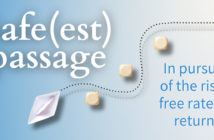When looking at capital sources, which wave are you going to ride?
Traditional banks, commercial mortgage-backed securities (CMBS) conduits, SBA, and other government guaranteed program lenders may dominate commercial real estate industry headlines, but there are other capital market players making significant contributions to the $300-billion annual financing market. Also on the field are insurance companies, bridge funds that use either commercial real estate collateralized loan obligations (CRE CLO) execution to capture liquidity or leverage warehouse lines of credits to fund loans, and commercial real estate’s hidden gem, credit unions.
 1 INSURANCE COMPANIES
1 INSURANCE COMPANIES
There are two main types of insurance companies: property and casualty insurance companies, and life insurance companies. Unhampered by FDIC and other strict federal lending regulations, insurance companies have the flexibility to fund out-of-box transactions. They are also able to offer non-recourse money through a less-cumbersome process than CMBS and with 25- to 30-year fixed terms for stabilized assets. But it’s not all good news for borrowers. Because an insurance company’s balance sheet is funded by the premiums it receives on the policies it writes, most have more conservative investment policies than other capital providers and see little upside to take on additional risk. As a result, they aren’t looking to make money from real estate lending operations.
In fact, a typical insurance company won’t write a senior mortgage at more than 65% loan to value, and most will also avoid hospitality and other higher risk asset classes. However, we’ve seen a recent rise in life insurance lending in commercial real estate as middle market and large private equity players have acquired insurance companies for the purpose of using those firms’ balance sheets to write commercial real estate loans. Even so, hotels remain difficult to finance due to their risk. In some situations, a life insurance company may offer a slightly higher priced bridge loan for transitional assets that have yet to stabilize. Some insurance companies would selectively lend on stabilized hotels.
 2 BRIDGE FUNDS
2 BRIDGE FUNDS
Bridge funds are essentially a pooled fund with multiple limited partners or investors, including large high-net worth family offices; corporate pension, sovereign wealth, and teachers’ union funds; and city, state, and large university endowments. These investors anchor the fund and are then followed by smaller, sophisticated investors. Bridge funds usually target a 10% to 15% all-in return for their investors. For a fund to achieve this level of return, it recycles the capital of the fund in and out of loans using mechanisms such as the CRE CLO market. CRE CLO is a securitized vehicle akin to a CMBS loan. However, CRE CLOs afford borrowers more flexibility at a lower price than a balance sheet bridge loan and are best suited for cash-flowing assets, or properties in transition and almost stabilized. With plenty of liquidity in today’s market, CRE CLO bridge loans are currently pricing from 200 to 350 basis points over 1 month LIBOR, which translates into interest rates from 2.25% to 3.75%. These loans are typically offered with two-year terms plus an option to extend for an additional year and are available for hotel properties.
Like CMBS, CRE CLO loans are pooled by the issuer and include both an investment and equity piece, but they aren’t tranched into as many pieces as a CMBS pool. The lender writing the loan will typically keep the equity piece of the loan pool and sell the senior piece into the bond markets through a process called securitization. With today’s current interest rate environment, investors are eager to invest in floating-rate bonds, which has increased both the demand for floating CRE CLO-backed loans and the number of bridge funds making them.
Bridge funds also use warehouse lending to capitalize on the current market. In this situation, a fund establishes a line of credit against a well-defined box of loans with a bank or other financial institution. These line lenders will then outline approved criteria for senior loans they will take as collateral for the bridge fund. This is classic loan-on-loan leverage. Warehouse lines are normally priced at LIBOR plus 150 to 200 basis points, which allows bridge funds to lend money at 4% to 7% to the end user, while still delivering double-digit returns to their investors. Bridge funds that use warehouse lines typically target cash-flowing assets, including hospitality.
 3 CREDIT UNIONS
3 CREDIT UNIONS
Credit unions enjoy all the positive benefits of a bank without the same regulatory and compliance pressures. This arbitrage allows credit unions to be more nimble, flexible, and competitive in their lending. Because they don’t have extensive origination staff, credit unions rely on external resources to fuel their loan pipeline, making them hyper-focused on forging relationships with mortgage bankers who can provide deal flow. While credit unions are likely to require full recourse, at certain lower leverage points non-recourse is an option with some credit unions. Best of all, they typically offer long-term loans without pre-payment penalties, and some national and regional players will lend on hotels for the right borrower or mortgage banker.
Relationships are everything in commercial real estate capital markets. To view a full landscape of available capital sources, borrowers should work with an intermediary who is full time in the market and understands the inner workings of all variations of stakeholders.





